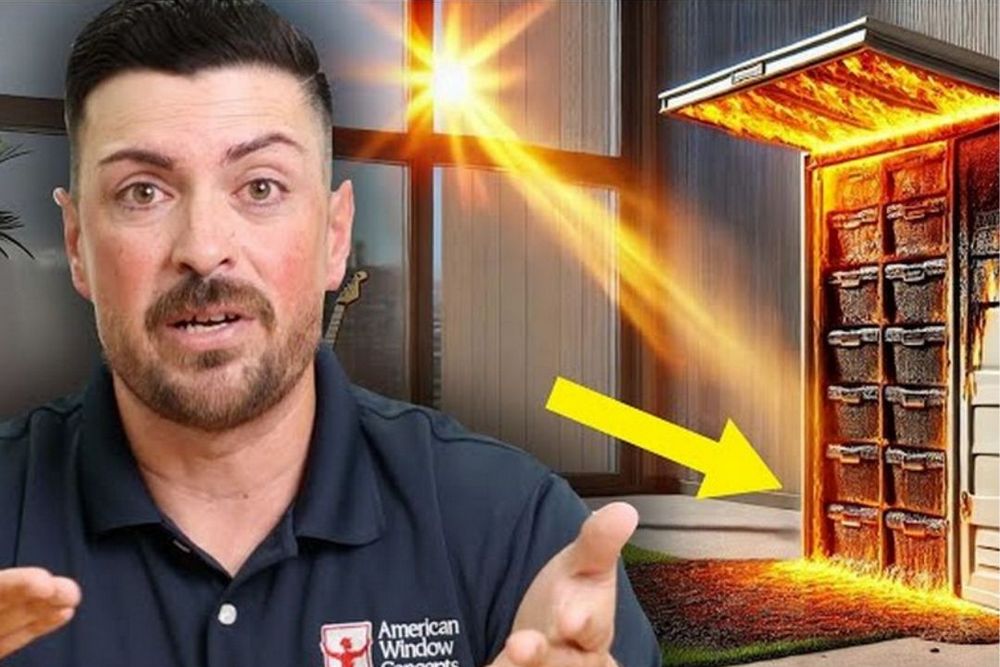
When you think about energy-efficient windows, the benefits that come to mind often include better insulation, lower energy bills, and enhanced home comfort. However, there’s a lesser-known phenomenon that some homeowners might find surprising—or even alarming. Can energy-efficient windows actually start fires? The answer lies in their reflective properties and the unique conditions surrounding them. Let’s dive into this fascinating topic.
What Causes Energy-Efficient Windows to Become Fire Hazards?
Energy-efficient windows, particularly those with Low-E (low-emissivity) coatings or high-performance tints, are designed to reflect heat away from your home. These coatings improve insulation by redirecting sunlight and preventing excessive heat gain inside your house.
However, under certain conditions, the reflected sunlight can concentrate like a magnifying glass. This intense reflection may focus on a small area, such as a nearby surface, potentially causing damage or even igniting flammable materials. Examples include melting vinyl siding, warping plastic storage containers, or scorching artificial grass.
Real-Life Scenarios
Sean, a seasoned expert at American Window Concepts, has encountered these issues firsthand during his 24 years in the industry. While working on warranty claims, he’s observed cases where homeowners or neighbors experienced melted or warped surfaces caused by reflective window glass.
For instance, upstairs windows with specialized glass, such as Sunshield Max with its bluish tint, can reflect sunlight with high intensity. As the sun moves across the sky, these reflections can create concentrated heat patterns, often shaped like the window itself. This can lead to visible scorch marks on artificial turf, dry grass, or even outdoor furnishings.
Could Reflected Light Start a Fire?
Yes, in rare circumstances, reflected sunlight from energy-efficient windows could start a fire. Much like using a magnifying glass to focus sunlight on a dry leaf, the concentrated heat can ignite dry, flammable materials under the right conditions.
It’s important to note, however, that this is not a widespread issue. Most energy-efficient windows are perfectly safe, and the likelihood of starting a fire depends on specific factors, including:
- Type of window coating or tint
- Orientation of the window
- Proximity of reflective light to flammable materials
- Environmental conditions, such as dryness and wind
How to Prevent Issues with Reflective Windows
While the risk is relatively low, there are measures you can take to minimize potential problems:
- Install Window Screens
Adding screens to your windows can diffuse the sunlight and reduce the intensity of reflections. However, keep in mind that screens may also block some natural light, making your interior spaces darker. - Use External Shades or Awnings
Roller shades or retractable awnings can provide effective shading for windows that receive direct sunlight. These solutions block the sun before it reaches the glass, reducing the intensity of reflections. - Be Mindful of Your Surroundings
Keep flammable materials, such as dry grass, weeds, or plastic furniture, away from areas where concentrated sunlight might land. Regular maintenance of outdoor spaces can also reduce fire risks.
Balancing Efficiency and Safety
Energy-efficient windows are a fantastic investment for improving your home’s comfort and energy performance. While the potential for reflective damage exists, it’s manageable with proper precautions.
Learn More
For a free in-home estimate, visit our website. If you found this information helpful and want to stay updated on windows and doors, subscribe to our YouTube channel.
Stay tuned for more valuable window tips from American Window Concepts.
Watch Our Video:
